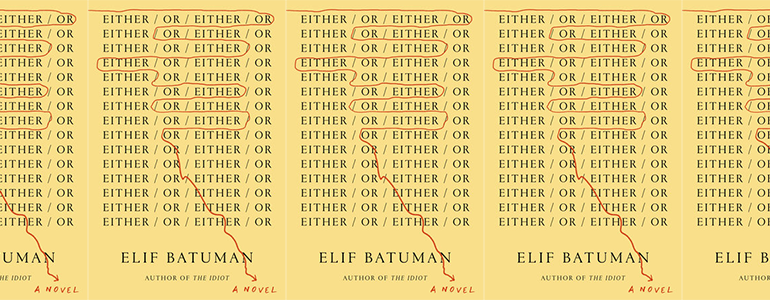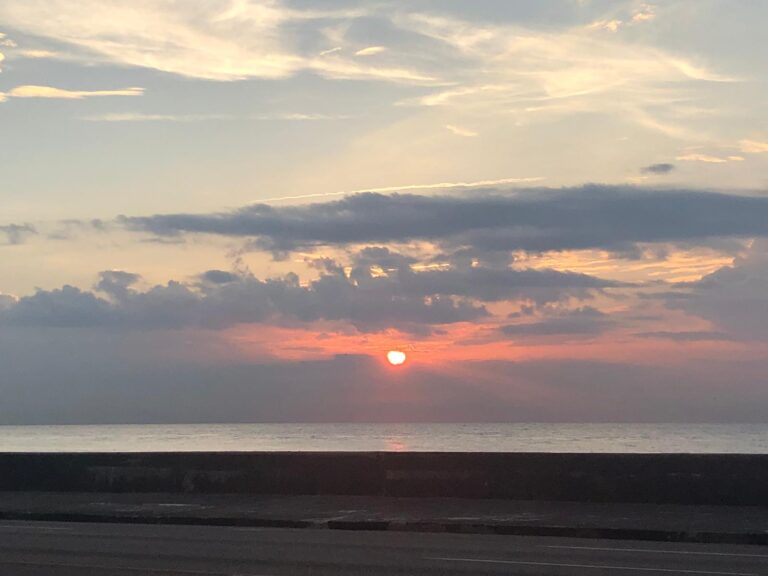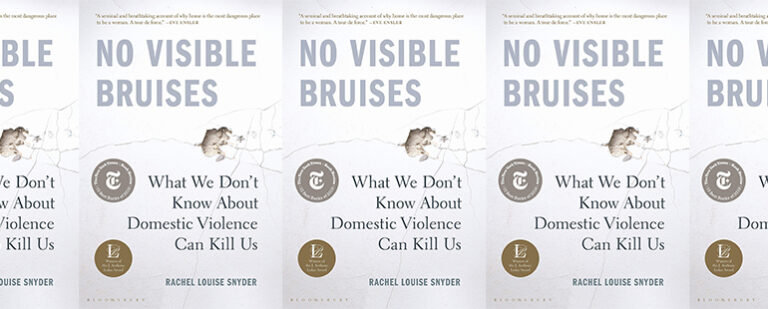Either/Or’s Aesthetic Questioning

I was first interested in The Idiot (2017), Elif Batuman’s first novel, because it seemed relatable. Like Selin, the heroine, I lived in Cambridge, MA, and had recently returned from teaching English in Budapest, Hungary. At the time, I felt a bit ashamed of my impulse: reading a whole novel simply because I had experiences similar to those of the main character and thus thought, naively, that it might teach me something about myself. Now, I think there’s nothing more like Selin than that—choosing something to read based on what I want to get from it. As Selin also learns, however, my expectations of life lessons were never to be met. I loved The Idiot but found it sad and lonely. Of course, at the time, I was sad and lonely myself: one semester into a graduate program, living in a city I’d never visited before my move.
I reread The Idiot this month, then devoured its new sequel, Either/Or, which is out today. This time around, neither were remotely sad to me. This is perhaps because I am happy and distinctly less lonely these days. It’s also because reading the two books together makes it clear that Selin’s journey is far less existential and far more stylistic, more concerned about the aesthetic possibilities of a novel, than it at first seemed. In Either/Or, Selin is trying to figure out how to narrate love, how to make it make narrative sense; on the way, she figures out what love and novels have to do with each other.
The Idiot, and Either/Or even more so, considers the way a novel holds together a life. The Idiot follows Selin in her linguistic journey—we see her taking courses in linguistics and witness her concerted efforts to learn Russian and Hungarian—while Either/Or shows Selin as a literature major and, crucially, a writer. In a childish (if relatable) fashion, Selin views herself as a novelist, even though she has only written one short story. Her entanglement with the novel goes back to childhood—she recalls that “I had wanted to become a novelist before I even knew how to read, back when I could only consume books by having them read to me…I understood that a novel would explain all the things I wanted to know.” For Selin, the novel is the highest form of art—it is an important site where details cohere into meaning, “in some way the very mark of civilization.”
At its core, then, Either/Or is a novel about a heroine trying to figure out her role in a novel—or more precisely, figure out what kind of novel she is in. Her search for the “aesthetic life,” as opposed to the ethical one, an idea she finds most memorably portrayed in Soren Kierkegaard’s Either/Or, leaves her wondering about narrative. What roles does she have to play? How do other people impact her? When will something happen that gives a sense of completion? Selin continues this line of questioning through reflections on a literature course syllabus in the fall, a creative writing seminar in the spring, and a summer spent writing for Let’s Go in Turkey.
Yet the shape of Either/Or is exceedingly odd—certain periods occupy much more of the year of the novel than others, with Part One set entirely in September 1996 while Part Two is “The Rest of the Fall Semester.” The form of the novel seems to reflect Selin’s own concern for plot, for how to pace and narrate the aesthetic life she is so ardently searching for. “I had thought that an aesthetic life would be more like a string of adventures than like a coming-of-age novel,” she says, “or the life-cycle of a frog, where there was a grand progression ending with ‘maturity’ and the ability to procreate. But it was impossible to imagine an aesthetic life, or any life, without falling in love. Without love, knowledge itself became a hassle; became bullying and imposition.” Selin concludes that “falling in love was the essential feature of a novel.” It is the impetus for plot, the “essential feature” that gives shape to a novel—and to life.
Notably, Selin is not falling in love in Either/Or. She’s haunted by her quasi-love from freshman year, Ivan, or the mysterious man, The Count, that she orchestrates her first sexual encounter with. She has several crushes on her travels, hook-ups ranging from odd to terrifying to sweet. But Selin is not falling in love or wishing to be in love. She is simply reflecting on what love is. She asks Mesut, a man she sleeps with in Cappadocia, what he thinks about love, and he responds, “‘Love is to get caught on something,’ he said readily. ‘It’s to be unable to forget.’”
This is an excellent definition for the way love works in Selin’s life—it distracts her from the real world, giving her a kind of hyper-focus on the beloved. Love is, after all, largely a question of focus, of where you will give your undivided attention. For Selin, love is the past. She is beset by details, obsessed with them, “unable to forget.” Her psychiatrist asks her about the events of the previous year: “Why are all these details so precious to you?…What is so precious to you in this story with this Hungarian fellow? Why are you holding on to it?” What reads as love here—getting “caught on something,” being “unable to forget”—is also the same impulse as the novelist: to record, to make discrete elements add up to something larger.
Love and the impulse to write thus come to overlap—they are both actions of taking small and incoherent details and weaving them up together, seeing what it all adds up to. My friends call this the “slumber party effect”: if you talk to your friends enough about someone and what their actions mean (why does he text me only at night? Does she talk to her ex because she’s helping her through something? Is he into me?), you’ll be able to convince yourself that whatever you’re imagining is exactly what’s happening. You can con yourself into thinking anyone is in love with you when you’re in a room with your closest friends and have just a few text messages as primary sources. It’s an echo chamber, of course, but it’s also the site of making narrative. It’s writing fiction, which means it doesn’t have to be true to feel true.
As for Either/Or, Selin doesn’t end up falling in love, but the novel ends with her being in love with another text—Henry James’ The Portrait of a Lady (1881). Reading James moves Selin like nothing but Ivan and Kierkegaard have; she feels “all the different things that Ivan had said and written come flooding back to me, assuming a new shape, bigger than I had suspected. It was happening again now: some pieces of some larger story that I could barely make out where flying into new positions, and I was remembering things I had forgotten, and putting them together differently, and all while I was sitting still and not going anywhere or doing anything.” Reading becomes like writing here, an opportunity to reorder events, to play around with form, to figure things out.
What she figures out is largely future oriented. It’s Selin’s most ardent articulation of desire in this whole novel: “I was going to remember, or discover, where everything came from. I was going to do the subtle, monstrous thing where you figured out what you were doing, and why.” These are writerly questions for Selin, questions of form and narrative. Her inquiry is not so existential as aesthetic—not just what makes a life worth living, but one worth reading. If it’s love, it remains elusive to Selin. If it’s desire for things to make sense, she’s just getting started.


